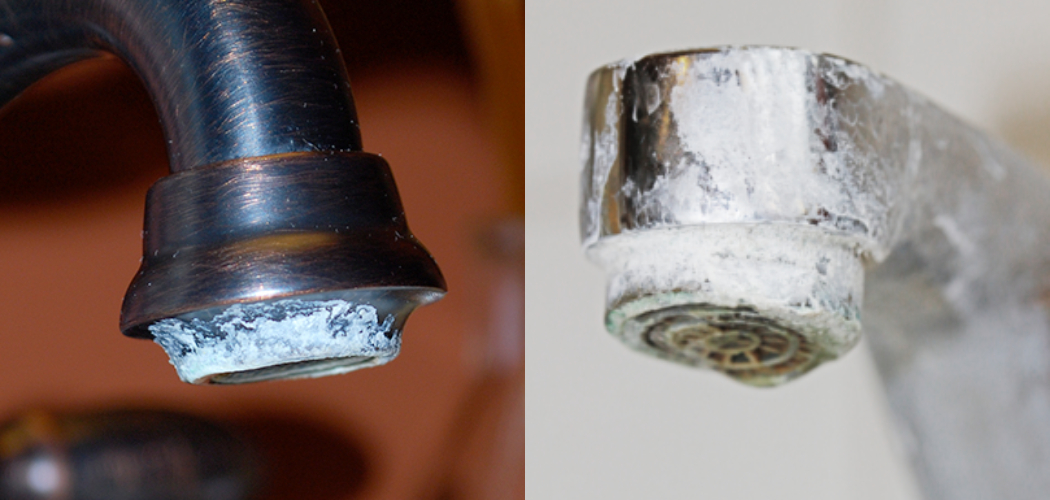Calcium buildup can be a real pain, especially when it forms on faucets. Luckily, there are some simple ways to prevent it from happening in the first place. This blog post will discuss what causes calcium buildup and how to prevent calcium buildup on faucets.
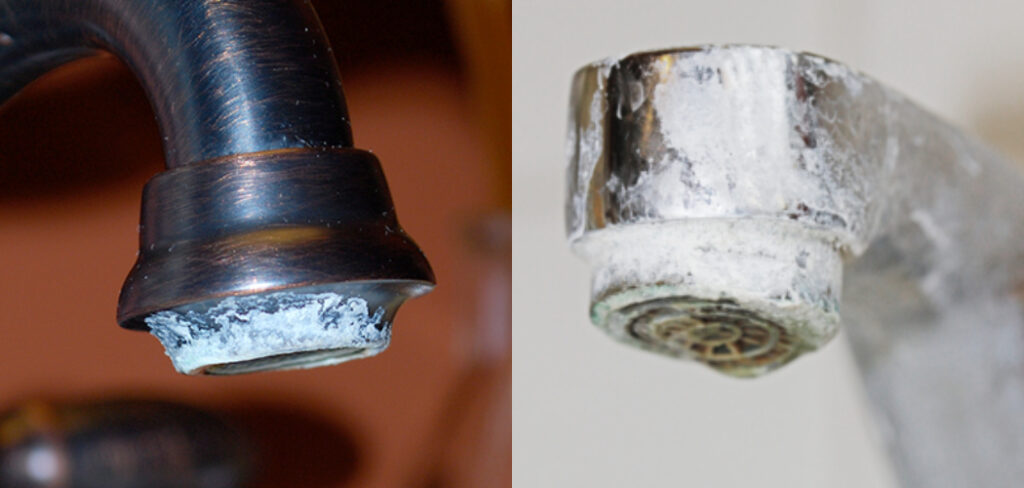
We’ll also provide preventative measures that you can take to keep your faucets looking clean and new. So if you want to know the best ways to prevent calcium buildup, read on!
What Causes Calcium Buildup?
Calcium is a naturally occurring element that is found in water. When water evaporates, the calcium is left behind and can accumulate on surfaces like faucets. The amount of calcium in water varies depending on the source. For example, well water typically has more calcium than city water.
Calcium buildup is more likely to occur in hard water areas. This is because hard water contains high levels of minerals, like calcium and magnesium. When water evaporates, the minerals are left behind and can accumulate on surfaces like faucets.
Few Symptoms of Calcium Build-up
White Spots on Faucets:
One of the first signs of calcium buildup is the appearance of white spots on your faucets. This is because calcium deposits are visible when they first start to form. If your faucets have white spots, preventing further buildup is a good idea.
Faucets That are Difficult to Turn:
Another symptom of calcium buildup is faucets that are difficult to turn. This is because the deposits can cause friction, making it harder for the faucet to move. It can also cause your faucets to leak more easily. If your faucets start sticking, cleaning them is a good idea.
Water Pressure is Lower than Normal:

If you notice that your water pressure is lower than normal, it could be because of calcium deposits in your pipes. This is because the deposits can restrict water flow through the pipes. To clean the deposits, you can use vinegar and water solution. Simply mix equal parts of vinegar and water and pour it into a spray bottle. Then, spray the mixture onto the affected areas and let it sit for about an hour. After that, scrub the area with a brush to remove the deposits.
Water Has a Bad Taste or Smell:
Another sign of calcium buildup in your pipes is if your water starts to taste or smell bad. The deposits can cause the water to become stagnant, leading to bacteria growth and bad taste and smell. To clean the faucet, remove the aerator screen and soak it in vinegar for about an hour. You can also use a toothbrush to clean any visible buildup on the screen. Next, rinse the screen well and reattach it to the faucet.
Stained Sinks and Fixtures:
Calcium deposits can also cause your sinks and fixtures to become stained. This is because the deposits can interact with certain metals, causing a chemical reaction that results in stains. To clean the stains, you can use a vinegar solution. Simply mix vinegar with one part water and apply it to the stained areas. Let it sit for a few minutes before wiping it away. You may need to repeat this process a few times to eliminate the stains completely.
If you notice any of these symptoms, taking steps to prevent calcium buildup is a good idea. Read below to learn how to prevent calcium buildup on your faucets.
10 Effective Ways on How to Prevent Calcium Buildup on Faucets
You can do a few things to prevent calcium buildup on your faucets. Here we have discussed different ways that can help you achieve this.
1. Install a Water Softener:
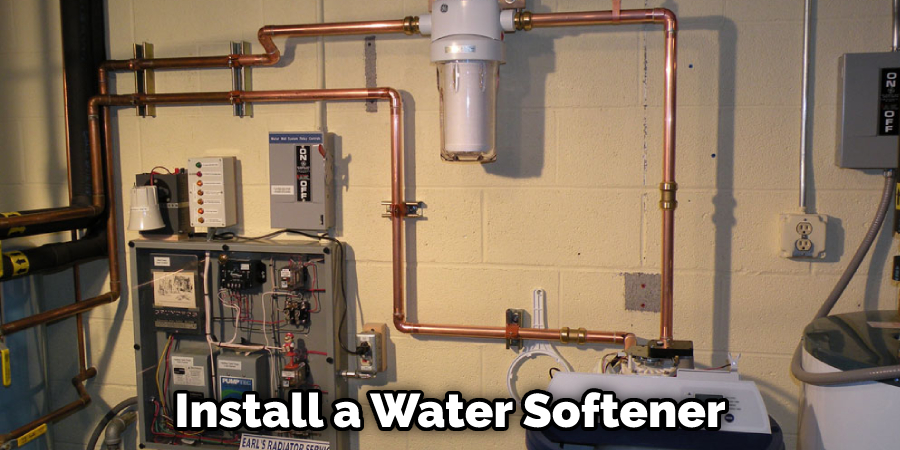
One of the best ways to prevent calcium buildup is to install a water softener. This will help remove the calcium from the water before it comes out of your faucet. If your area has hard water, this is a great option. But be careful to read the instructions with the water softener so you don’t damage your plumbing.
2. Use a Vinegar Solution:
Vinegar is an acidic substance that can help break down calcium deposits. Make a solution of 1 part vinegar and two parts water. Apply this solution to the faucet using a clean cloth and let it sit for 30 minutes. Then, rinse it off with clean water and dry the faucet.
3. Use Lime Away:
Lime Away is a product that is specifically designed to remove lime deposits. Follow the instructions on the bottle and apply it to the faucet. Let it sit for the specified amount of time, then wipe it away with a clean cloth. You may need to use a toothbrush to scrub away stubborn deposits.
4. Use Baking Soda:
Baking soda is another effective solution to remove calcium buildup on faucets. Make a paste of baking soda and water. Apply it to the faucet and leave for some time. If your faucet is very dirty, you can leave the paste overnight. In the morning, brush off the paste with an old toothbrush and rinse with water.
5. Use CLR:
CLR is a product that is designed to remove calcium, lime, and rust buildup. It is safe to use on metal surfaces and will not damage your faucet. To use CLR, mix a solution of one part CLR with four parts water.
Apply the solution to the affected area with a sponge or cloth and scrub gently. Next, rinse the area with clean water and dry it with a soft cloth. If you have hard water, you may need to use CLR more frequently to prevent calcium buildup. You can purchase CLR at most hardware stores.
6. Use Hydrochloric Acid:
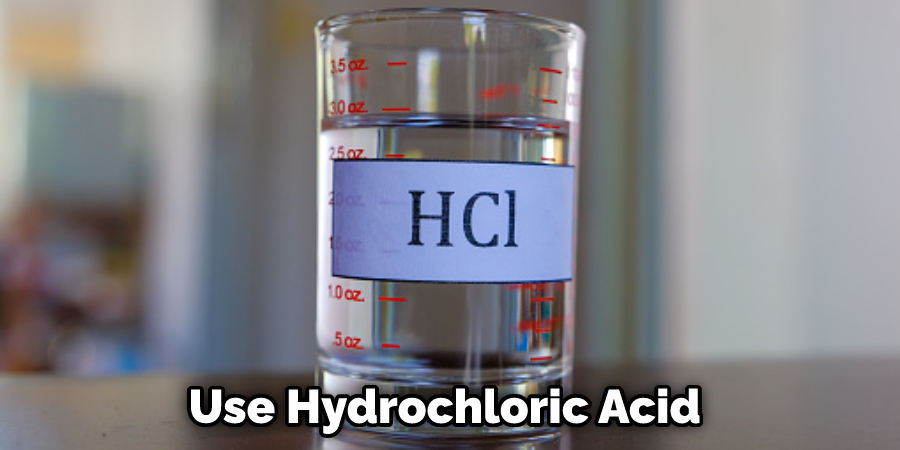
Hydrochloric acid is a strong acid that can be dangerous to use if you don’t take the proper precautions. Wear gloves, eye protection, and a respirator when using hydrochloric acid. It would help if you also worked in a well-ventilated area.
To use hydrochloric acid to remove calcium buildup, mix one part hydrochloric acid with four parts water. Apply the mixture to the calcium buildup with a sponge or brush and let it sit for about 30 minutes. Then, rinse the area well with water to remove any residue.
7. Using a Water Filtration System:
One way to prevent calcium buildup on your faucets is to use a water filtration system. This will remove minerals from the water before they can build up on your fixtures. Many types of water filtration systems are available, so you will need to research which one is best for your home. When using a water filtration system, follow the manufacturer’s instructions carefully.
8. Cleaning Your Faucets Regularly:
Another way to prevent calcium buildup is to clean your faucets regularly. You can do this by wiping them down with a soft cloth or sponge and mild soap. For tougher buildup, you may need to use a commercial cleaner to remove calcium. Read the instructions carefully before using any cleaner on your faucets.
9. Drying Out the Faucet:
After you have cleaned your faucets, it is important to dry them completely. Water can cause calcium deposits to form, so it is important to remove any water from the surface of the faucet. You can do this by wiping it down with a soft cloth or using a hairdryer set on low heat. It would help if you were careful not to overheat the faucet, damaging the finish. Once the faucet is dry, you can apply a thin layer of petroleum jelly to the surface. This will help prevent water from forming on the surface and make it easier to clean in the future.
10. Replacing Your Faucets:
If you have hard water, you may need to replace your faucets more frequently. Over time, the calcium buildup can damage the finish and function of your faucets. If your faucets show signs of wear, it may be time to replace them. Make sure your new faucets are made of materials resistant to hard water damage.
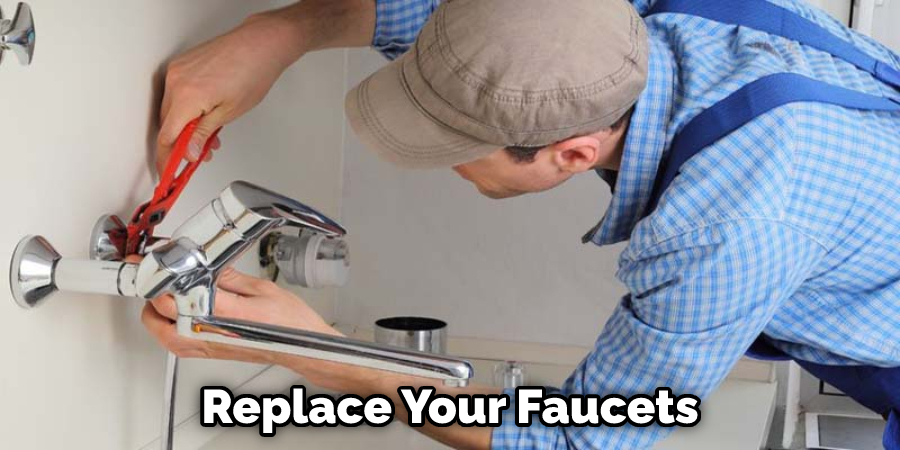
Additional Tips and Advice
- Use a soft cloth or sponge to clean your faucets regularly.
- Avoid using abrasive cleaners on your faucets.
- If you notice calcium buildup, soak a cloth in white vinegar and wrap it around the affected area. Leave it for a few hours, then scrub with a toothbrush before rinsing with water.
- You can also try using a commercial cleaner designed to remove calcium buildup.
- If your faucets are made of brass or metal, polish them regularly to help prevent calcium buildup.
- Always dry your faucets after use to prevent water spots and calcium buildup.
- If you have hard water, consider installing a water softener. This will help to prevent calcium buildup in your faucets and throughout your home.
Conclusion
Calcium buildup on faucets is a common issue that many homeowners face. Luckily, there are several ways to prevent this from happening. This blog post has outlined ten different methods how to prevent calcium buildup on faucets.
We hope you find these tips helpful and help keep your faucets looking beautiful and functioning properly. Have you tried any of these methods for preventing calcium buildup? If so, tell us about your experience in the comments section below.
you can chack is out How to Remove Green Buildup on Faucet

